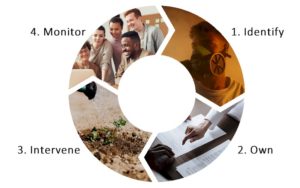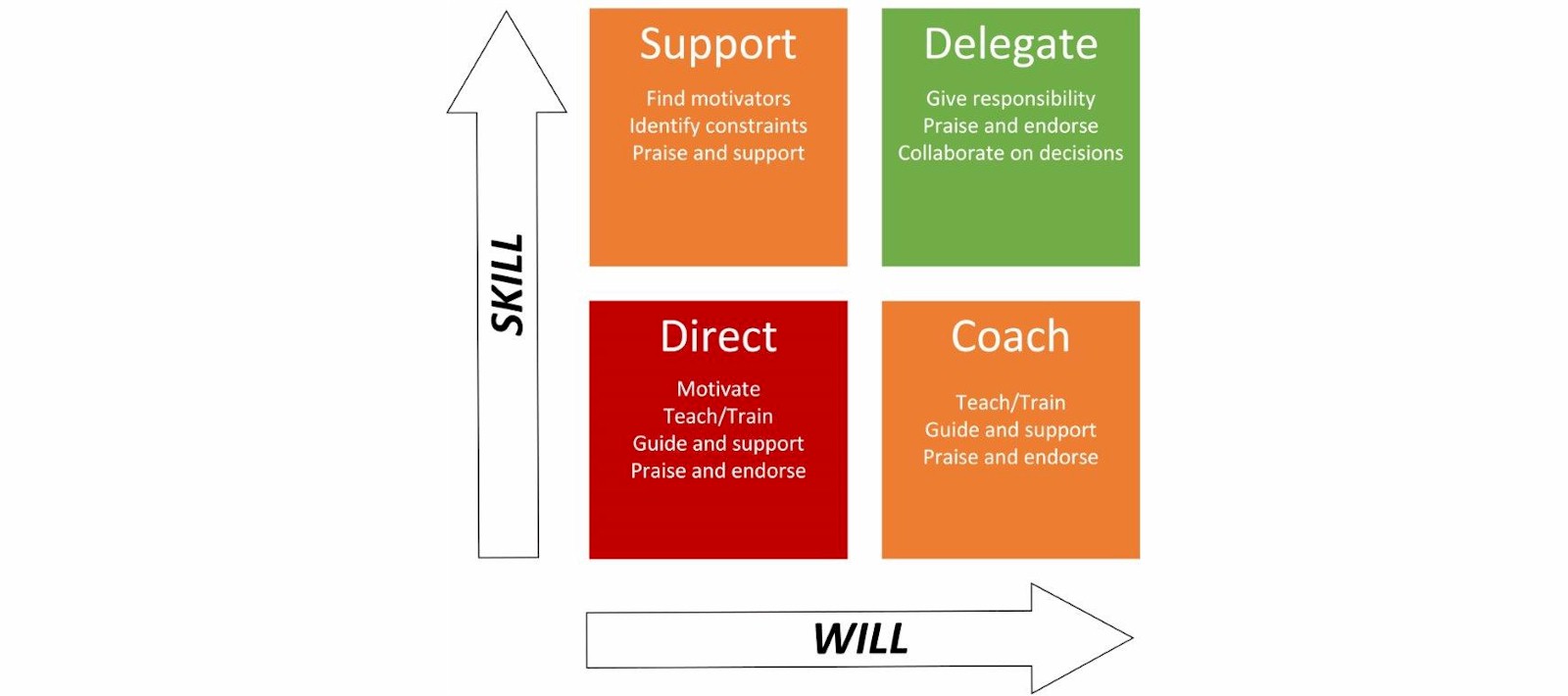If you have ever worked in a toxic environment, it can be a living nightmare. It can not only have a devastating impact on performance, but can cause severe mental distress for the individuals in your team. It is that serious. A toxic team is a broken team, and the culture is sustaining or reinforcing this. The culture of the team comes down to what behaviours the leader encourages, ignores, or tolerates. This article explores the four steps to turning around a toxic team.
What are toxic behaviours?
Anything that negatively impacts the harmony of the team and goes against personal and organisational values. Behaviours that lead to mistrust, lying, cheating, or harm. Bullying, sexism, racism, or harassment are some sadly common practices in a toxic work environment. But equally, more subtle toxic behaviour can include mental manipulation (game playing), lack of accountability, and deliberately not sharing important information. Bad bosses can also exhibit toxic behaviour by deliberately going against workplace decisions they don’t agree with, sharing personal or sensitive information about co-workers, or accepting or ignoring the aforementioned toxic behaviours of others.
Want to learn more about tacking bulling? See our related article here.
Turning around a toxic team
Toxic behaviour comes in all shapes and sizes. Angry outbursts and clear disrespect for others are pretty obvious. But equally, behaviours from individuals such as passive aggressive comments, avoidance of work, clear favouritism, or low levels contribution can indicate the cause or effect of toxic behaviour lurking just below the surface. The following four steps explain how to turn this around and create a safer, enjoyable, and more productive team environment.

Step one: Identify
There are two elements to this first step. First, identify the most troubling behaviours, and then analyse their impact.
Start by listing them out from what bothers you most from your own observations, what excuses you hear most from others, and what other people complain about most. Then analyse each on your list for their emotional impact, and operational impact.
For example, you might have observed a senior team member having verbal outbursts in meetings when they have a strong view about something. This causes more junior team members to clam up and not offer their opinions. What further impact could this have? Do junior members feel threatened by this and is it impacting their own professional development? Are there important perspectives being missed that could impact team efficiency?
Once you have brainstormed your list, reflect on each with empathy. Put yourself in your teams’ shoes. Using our example, ask yourself why would a senior behave this way? Do they feel like they have to own everything? Why? What about the impact of this behaviour on others in the team? If a team member fears the wrath of a senior, they are probably less likely to act even if they know of a smarter way of working. They will also likely feel less respected and valued in the team.
Step two: Own
As leader of the team the buck stops with you. So, if you are accepting of toxic behaviours that you observe then you fall firmly in the bad boss camp. Leadership is not an easy path; it comes with responsibility. But equally turning around a toxic team takes a plan, followed up with action and perseverance. So, step two involves owning and prioritising your list to identify the order you need to address these.
To start, review the list you made in step 1 and prioritise the most dangerous and destructive behaviours you need to address first. Look at the impacts to assess first priority items, second priority, and third. Chances are some of your first priority items may be causing your second or third priority behaviours to manifest themselves. For example, one of the negative behaviours you might see is team members not sharing ideas and information until it is too late. This could come from fear of this angry senior. Tackling the primary cause will help improve this, although you will also still need to assess each issue independently.
Now comes the ownership part. For each item, identify who is the initiator of the negative behavior. This is person or people you need to identify as being responsibility for their behaviour. Using our example, this means identify the senior who has the outburst. But as leader you also need to accept ownership for taking certain actions to change or stamp out these negative behaviours when they occur, or reducing the opportunity for them to occur in the first place.
Step three: Intervene
This is where the rubber hits to road, and you act by choosing what needs to happen to turn around each item on your list. This is where you set the ground rules to address the negative behaviour.
To do this you need to highlight the problem and operational impact to the perpetrators. You need to jolt them out of this toxic cycle in some way. Use honesty and empathy with them and show that there is a better way. You want them to see a brighter future is possible, but this requires forgiveness for people who may have felt past wrongs which takes time, understanding, and often apologies from initiators.
For long embedded team behaviours, these are best dealt with in team settings. Be clear about the type of behaviours that are no longer acceptable, without naming individuals. Stick to giving examples of the behaviours and avoid the emotional side. You aren’t a therapist, you’re their leader. Trying to psychoanalyse people will likely lead to false assumptions and failure. Targeting the behaviour has the advantage of being observable, so it is easier to set and monitor standards of behaviour and explain the consequences of poor behaviour. That is a leader’s job.
For negative behaviours perpetrated by individuals, do these privately with them but follow the same process. Jolt them into reality by explaining the impacts of their behaviour and explain what positive behaviour and outcomes (the future) can look like. But also explain that they are responsible for their behaviours and that you will monitor and encourage them.
Follow-up with the discussion in writing explaining the new ground rules. For team “interventions” write up the outcome of your discussion in an email to the team, and for individuals do the same just for them.
Look out for bad apples
There may well be people who will deliberately try and undermine your efforts. They may themselves be top performers but undermine everyone around them leading to a less productive team overall. This takes more thought on how to address if they behave this way due to the situation they are in or due to their personality. You might need to consider removing or reassigning them to somewhere else in the team, or somehow isolating their work so they have less impact on others. In more extreme cases they may simply be incompetent and act in fear of being caught out, be incapable of change, or have some pathological character flaw. In these extreme cases you will need to act, as being lenient will reflect on your own credibility with the rest of the team.
To learn more about holding these difficult conversations, check out our related article here.
Step four: Monitor
Success or failure in turning around a toxic team will come down to how well you implement the interventions identified. To help have a real credible chance of success you first have to let the team know that you are taking responsibility for turning things around. That way they will start to understand it is not just a finger pointing or blame game exercise.
Put a line under the past, and focus on the future by acknowledging emotions, delivering apologies where necessary. Show them the way by explaining what is no longer acceptable, and what is, to lead people out of toxic behaviour. Focus on clear principles, such as “we do not raise our voices to each other because we act as professionals and show respect”.
Monitor the recovery, as this will take time. Long ingrained behaviours can resurface, so this is where you as leader need to be vigilant and relentless to ensure consistent reinforcement. Do not make exceptions as that creates hypocrisy and all this effort will be for nothing. Set clear examples when people act poorly. Reinforcement is key to quickly changing behaviour.
However, it is not always smooth sailing. If you do not see changes after your interventions, bad behaviours escalate, you get complaints about your interventions, or turnover increases, you need to move quickly. You may need to call in outside help.
Turning around a toxic team will take time. But positive signs that your efforts are helping will come in small moments. You might see visible signs of relief on your people, or a new energy or buzz in the group. You might receive thanks for intervening, or turnover reduce. People will give and accept apologies from each other more often, information is more readily shared, and feedback is constructive and welcomed. Above all, your team will smile more, and be more excited about their work and future.















